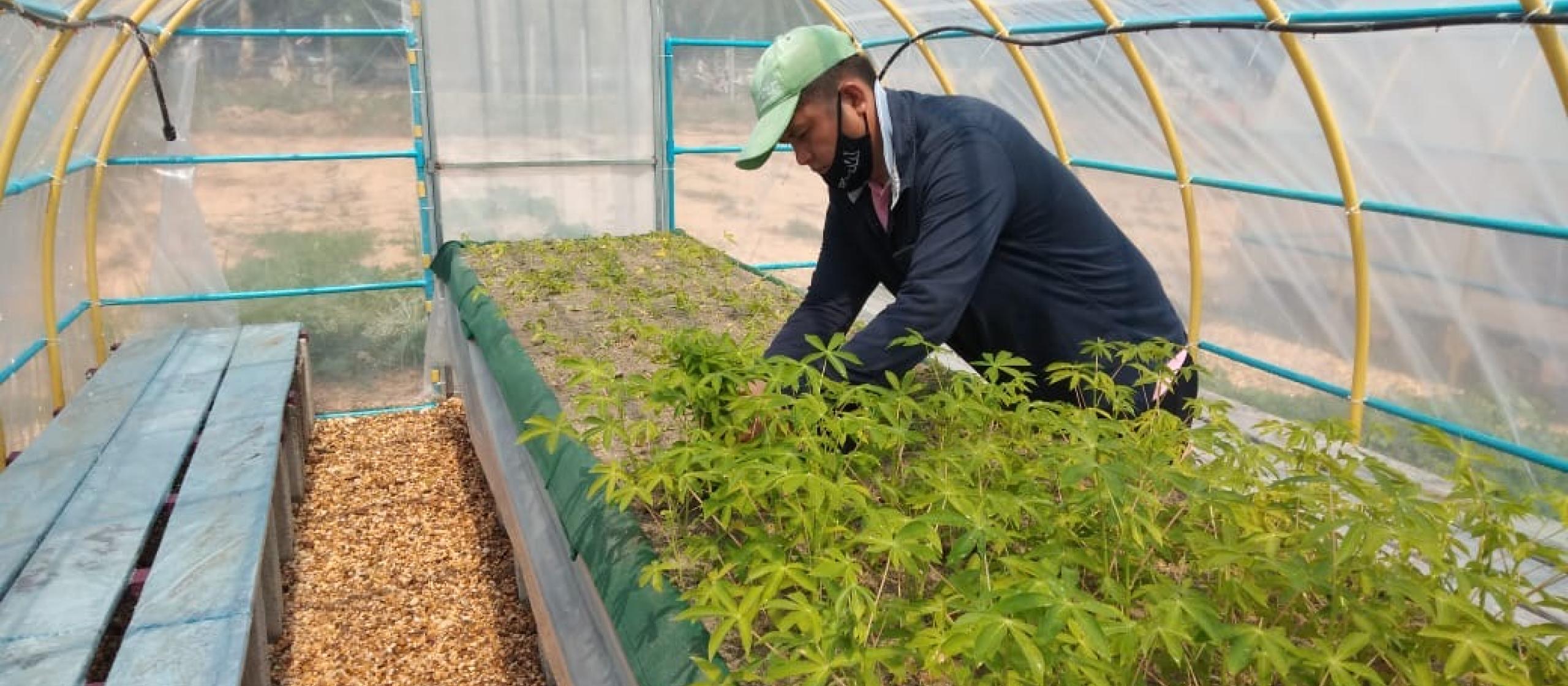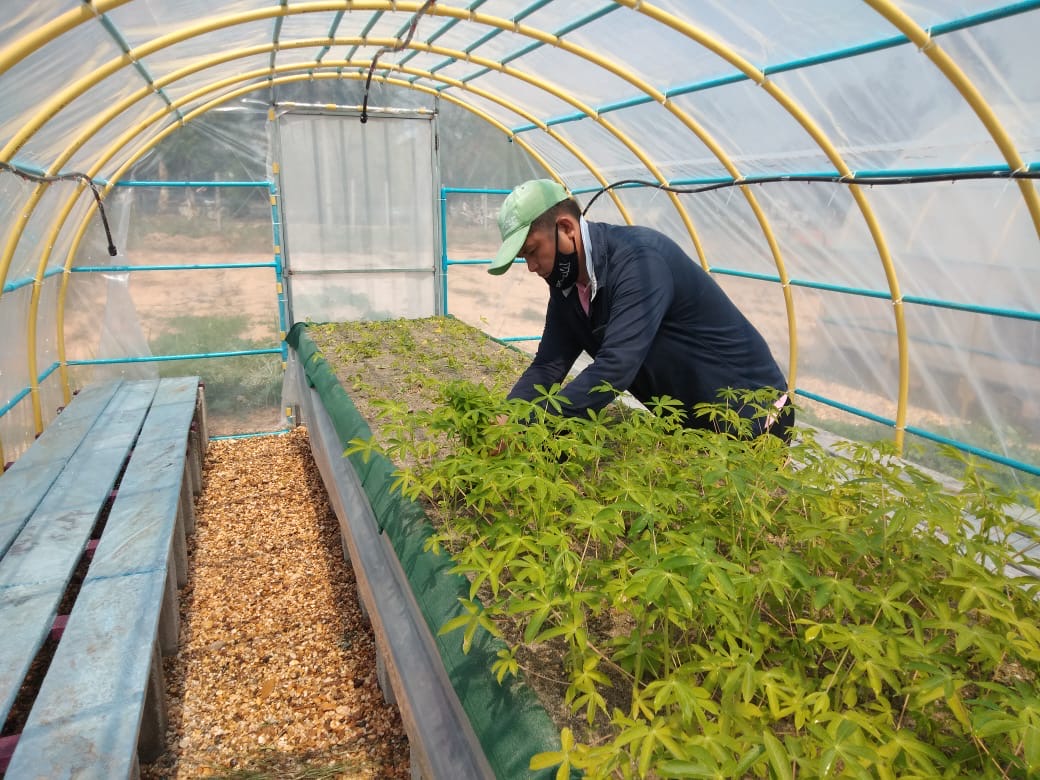- HomeHome
-
About ACIAR
- Our work
- Our people
-
Corporate information
- ACIAR Audit Committee
- Commission for International Agricultural Research
- Policy Advisory Council
- Agency reviews
- Executive remuneration disclosure
- Freedom of information (FOI)
- Gifts and benefits register
- Information publication scheme
- List of new agency files
- Contracts
- Legal services expenditure
- Privacy impact assessment register
- Commonwealth Child Safe Framework
- Benefits to Australia
- Careers
- 40 years of ACIAR
-
What we do
- Programs
- Cross-cutting areas
- Resources
- Where we work
-
Funding
- Research projects
- Fellowships
-
Scholarships
- John Allwright FellowshipScholarships to study in Australia for ACIAR partner country scientists to have Australian postgraduate qualifications
- ACIAR Pacific Agriculture Scholarships and Support and Climate Resilience Program
- Alumni Research Support Facility
- Publications
- News and Outreach
Date released
22 June 2020
While the world worries about the global impacts of the coronavirus pandemic, smallholder cassava farmers in South-East Asia are being affected by other diseases with significant impacts on livelihoods.
Cassava witches’ broom disease (CWBD), which can cause yield reductions of up to 90%, and the more recent cassava mosaic disease (CMD), which can slash yields by as much as half in the first year of infection alone, are sweeping across South-East Asia. With more than two million households throughout the region engaged in cassava farming, this largely commercial or ‘cash’ crop is the feedstock for a variety of everyday products ranging from sweeteners to paper.
‘This is really a pro-poor crop since it can grow in poor soils and requires limited inputs,’ says Dr Jonathan Newby, an agricultural economist at the International Center for Tropical Agriculture (CIAT). ‘When the yield goes down, poor farmers in these marginal areas don’t really have flexibility in what they do.’
Regional approach required
Dr Newby leads a new ACIAR-supported project that started in September 2019 aimed at establishing sustainable solutions to cassava diseases in mainland South-East Asia. The four-year project is directly funding research partnerships in Laos, Vietnam, Cambodia and Myanmar with in-kind support and collaboration from Thai and Chinese institutions. Dr Newby says recent events have driven home more than ever how important these partnerships are.
‘The current global coronavirus pandemic has highlighted to the general public how quickly diseases can spread across national borders and the need for a regional plan that both manages the short-term impacts and provides long-term solutions,’ he says.
Cassava diseases, if left unchecked in South-East Asia, could devastate the lucrative multi-billion-dollar cassava industry. To stem losses to both CWBD and CMD, Dr Newby and his colleagues are implementing a multi-pronged strategy that has a holistic approach. It includes breeding for disease resistance; diagnostics and surveillance; agronomy and seed systems interventions, looking at how to effectively deliver solutions into farmers’ hands; and policy and partnerships with the government and private sector. The approach will ensure a coordinated approach for the mass production and distribution of disease resistant cassava created by researchers
In the short term, the researchers have identified cassava varieties that are already grown in the region and are less susceptible to CMD, such as KU50, developed in Thailand. These varieties will be scaled up in rapid-multiplication tunnels with the help of public-sector institutions and private-sector stakeholders. That way, more farmers will gain access to healthy, relatively more-disease-resistant plant stems. Multiplication tunnels have already been set up in Laos and will be replicated throughout the region. At the same time, screening and breeding work is ongoing in Vietnam, Cambodia and Thailand to develop medium- and long-term solutions.
‘In the short term, if people multiply and maintain a clean source of planting material, the impact of the disease can be managed until new varieties can be developed, which is a longer-term prospect,’ says Dr Newby.
Developing a new cassava variety usually takes at least six years from start to finish. So, in the medium term, the researchers are testing disease-resistant cassava varieties developed in Africa by the Nigeria-based International Institute of Tropical Agriculture (IITA) to see how these will perform in Asia. Dr Newby and his colleagues have already planted these varieties in Vietnam and Thailand and say they expect to harvest them this October, along with other varieties from CIAT’s headquarters in Colombia.
Fostering relationships
Given that cassava diseases are a cross-country problem, a cross-country collaborative approach is needed—and ACIAR has played a key role in brokering these relationships. The project involves a wide array of researchers, institutes, industry associations and NGOs from six Asian countries contributing diverse perspectives to help tackle a critical problem. ‘Building and strengthening the formal and informal networks and trust between different stakeholders is as critical as the technology development,’ says Dr Newby.
‘While the current COVID-19 travel restrictions are certainly making this more challenging, the project team is using social media and online communication platforms to stay connected.’
But, while a regional approach and multidisciplinary nature are the strengths of the project, they are also some of its biggest challenges, acknowledges Dr Newby.
‘You have multiple stakeholders [with] different ideas on what’s more important and the politics around diseases can be cumbersome. It’s challenging, but it also makes the project really interesting and, hopefully, sustainable,’ he says.
The current project is slated to end in 2023 and is also being supported by the CGIAR program on roots, tubers and bananas.




